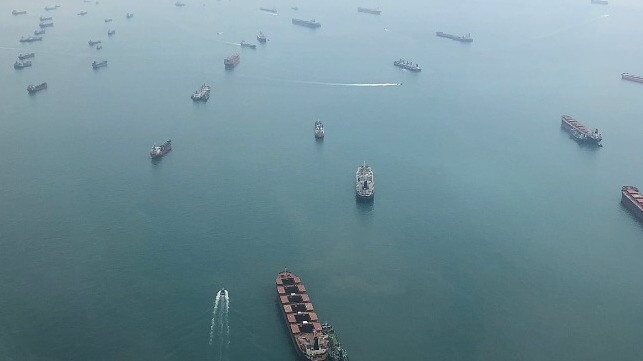Risky Business: How AI Can Cut Marine Losses

In the runup to Christmas 2022, shipowners received unwelcome but unsurprising news: they would face higher premiums the following year, owing to inflationary pressures driving up the cost of steel, spare parts and labor. The warning has since come to pass, with most P&I Clubs increasing their rates by around 10% during the latest round of renewals in February 2023.
If inflation is one factor behind the rate increase, so too is the heightened risk of hull and machinery breakdowns arising from the size of today’s vessels. Container ships have expanded by almost 1,500% in recent decades but crew numbers remain the same, creating more work and stress for seafarers. This, in turn, increases the chance of an incident occurring – leading to a potentially costly and time-consuming claims process – as bigger vessels generally come with greater risk.
Maritime companies want to be as efficient and practical as possible when moving goods around the world. However, crewmembers are struggling to deal with an ever-increasing workload on today’s huge cargo ships. This creates more risk of incidents, which in turn contributes to a growing backlog in claims reporting and even more costs for insurers. Those costs are then passed onto shipping companies through higher premiums.
Data from the Nordic Association of Marine Insurers shows that the costliest 1% of all claims account for at least 30% of the value of total claims in any given year. But shipowners’ resources are typically drained by more high volume and low-value claims such as cargo damage caused by leaking cargo hatch covers or a fire sparked by a misdeclared container.
Other common incidents include heavy weather leading to cargo losses; a fatal fall from a ladder; stowaways in the steering gear trunk; machinery failure; collision with another vessel; grounding; and piracy attack on a ship waiting for a berth, according to the Swedish Club, the maritime insurance mutual.
With premiums on the rise, the last thing shipowners need is the added cost of claiming for an incident at sea. Sharing data can support loss prevention by helping avert an incident before it happens – making shipowner and operators’ lives easier. For example, West P&I, an insurance provider to the global maritime and offshore industries, operates Neptune – a data portal for voyage planning and execution. The online system provides a global view of continental and oceanic weather data and maritime security charts. The upshot is that bridge crew and fleet managers can plot a safe passage for their vessel after being alerted to any potential weather-related or security risks when logging into Neptune.
Using technology is another loss prevention option that can mitigate the risks of incidents at sea. While there are many different options, solutions that can give fleet managers immediate visibility of onboard operations will better equip them to identify and mitigate any potential maintenance or safety risks related to piloting, cargo handling, and security.
One such example is through an AI-powered platform that plugs into a vessel’s CCTV to alert shipowners, managers and seafarers to onboard events in real-time. The technology taps into a vessel’s live camera footage, reducing the risk of incidents by highlighting unsafe events onboard, from piracy to bridge behavior. AI-powered CCTV can actually assist seafarers and shipping companies in avoiding incidents by making onboard operations safer and more efficient.
The system also enables crew and fleet managers to identify quickly the cause of an incident at sea. Establishing the reason is often difficult because many ships have limited contact with shoreside teams once they leave port. With limited visibility into ship operations, it is impossible to know what occurred on board when a vessel is involved in an incident such as a fire, piracy attack, or sinking.
AI technology addresses this issue by alerting seafarers and ship managers to events onboard, eradicating the need for them to sift through 10,000 hours of footage for every vessel each month in the hope of determining retroactively what happened following an incident.
Proactively taking action to reduce the likelihood of incidents happening is good practice for any ship owner or fleet manager. While eradicating the risks completely is unlikely, it is entirely possible for shipowners and managers to streamline the claims process following an incident. AI technology enables them to do that by establishing what happened quickly and efficiently.
The solutions to mitigate the ever-growing risk of maritime incidents are already available to shipping companies today, but increasing the uptake is now the biggest challenge. This starts by understanding how to integrate simple yet intelligent systems into current operations, identifying how to use data for improving operations, and beginning to nurture a more transparent culture between owners and insurers where both parties recognize the shared value of providing a true version of events. Achieving this will not only help prevent incidents at sea, but also ensure shipping companies realize efficiencies to manage rising incident and insurance costs.
Osher Perry is CEO and Co-Founder of ShipIn Systems.
The opinions expressed herein are the author's and not necessarily those of The Maritime Executive.
